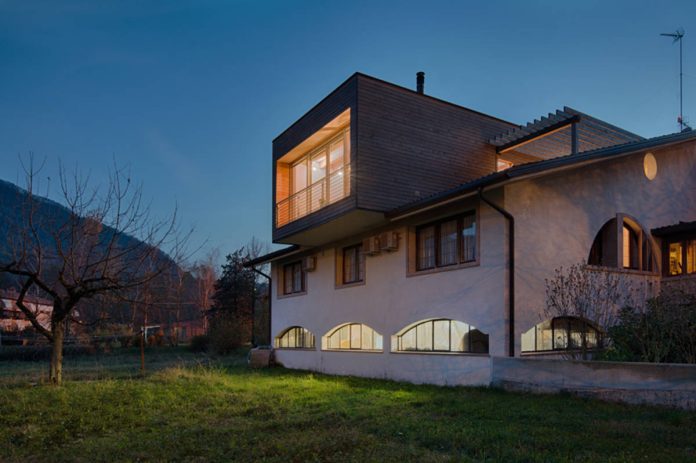Signed by Daniele Menichni, this expansion project, in order to create a private home within a building complex, is based in Treviso on the recovery of the top floor of a building used as a hotel, and its large pocket terrace.
The deliberately simple idea is aimed at creating a contemporary display of extremely clean lines and volumes by cutting through a portion of the roof and adding an eco-friendly wooden structure onto the terrace, connected to the already existing building.
After an in depth study of the building complex, resulting from many additions and accretions in various styles from the seventies until today, an architectural “intrusion” emerged almost like a “sea anemone that attaches itself to a crab’s shell as a reliable base from which to draw life from”. The extension’s architecture consists of rectangular beams and timber housing a large open space dedicated to the living room and kitchen. From this space you can view the village and the mountain just as though you’re looking through a telescope, with large openings that connect you with the beautiful surroundings where the pleasure of living is emphasised by these natural views.
The technical structure is both straightforward yet complex at the same time and is hidden by planks of wood treated with natural waxes. The frame, made of metal beams and asymmetrical mounting plates, allows anchorage to the already existent structure made of beams and reinforced concrete columns. Through this process we have created an anti-seismic structural knot that enables perfect load distribution above which sits the lighter wooden construction of low environmental impact. The sleeping area and service facilities were obtained from seven old seldom used rooms, and in order to avoid radical intervention on the building’s consolidated walls, we stayed as close as possible to the original layout’s configuration.
The entire extension and renovation project was designed around installation techniques, materials and solutions in keeping with eco-responsible design philosophy studies. These studies search for hidden and integrated alternative energy sources in order to have a close to zero impact on the environment. An original relationship between "old and new" results in a strong and discreet architectural note that is in line with the new ground zero consumption guidelines.







